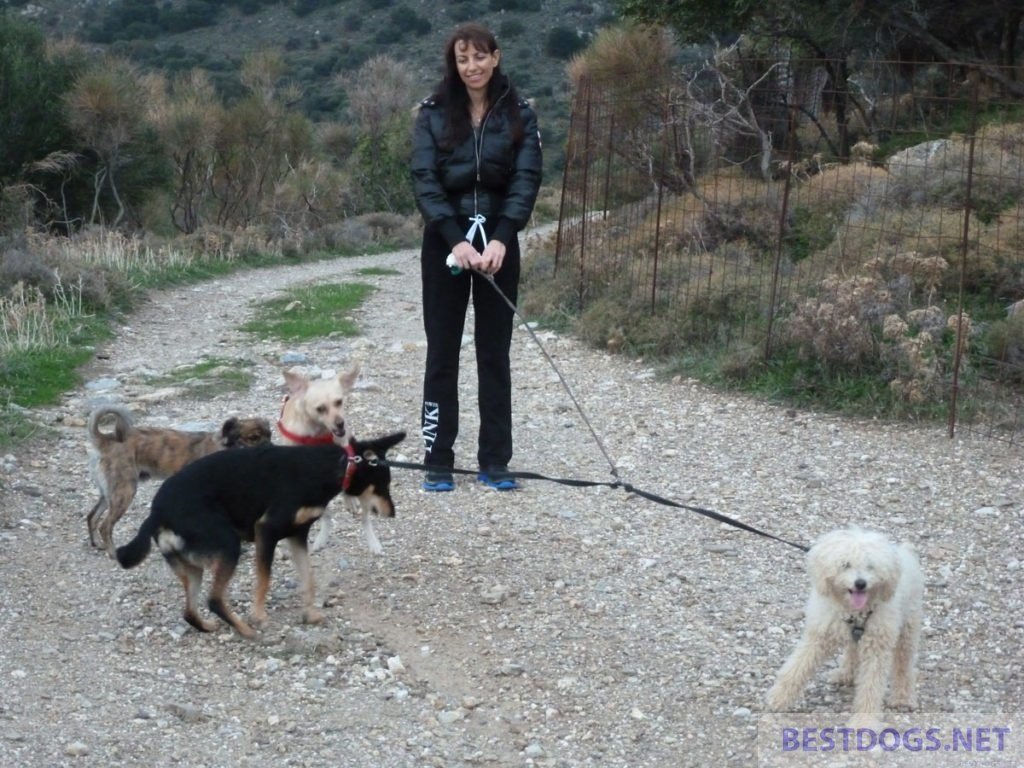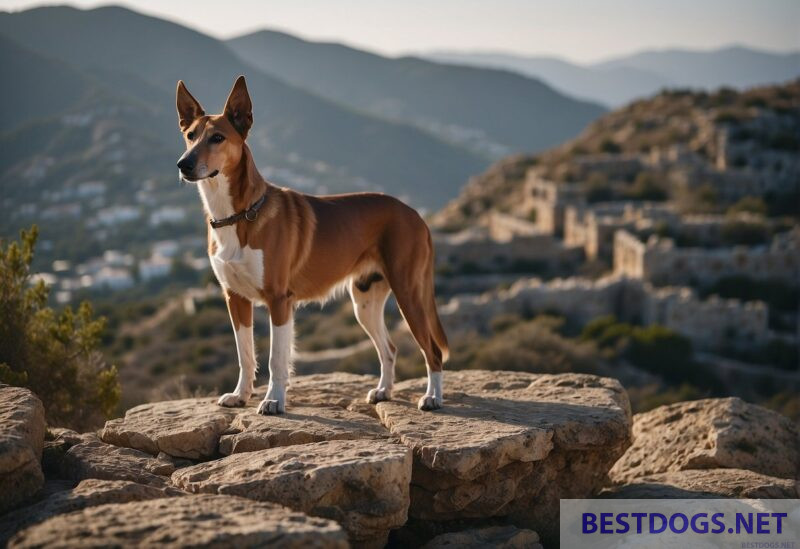The dog types in the Mediterranean countries.
From bell dogs to guard dogs, hunting dog breeds, herd dogs to barrel dogs, strays and street dogs.
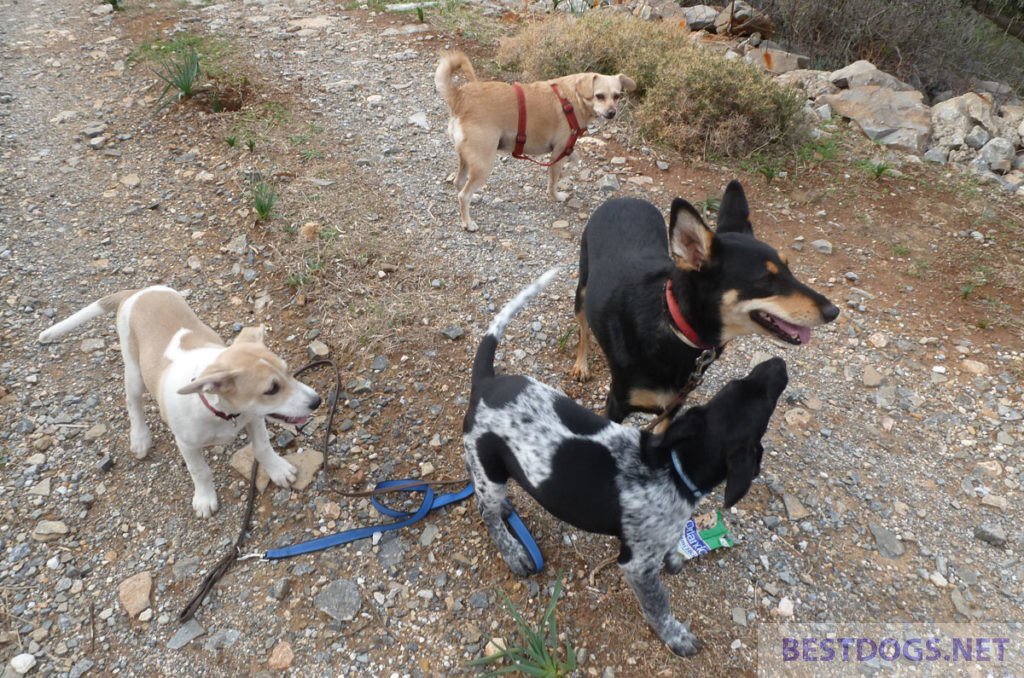
In the south all dogs had in the past and most still today a task. A dog that does not do its ‘job’ well is not worth its food.
This mentality changes only slowly and only the younger generation and some other animal lovers understand dogs also as part of the society and companion in life.
Bell dogs
Table of Contents
The first particularly conspicuous dog type in the southern Mediterranean countries is the so-called bell-dog. They are mostly smaller terrier mongrels in all variations and colors, and they do not necessarily belong to the most beautiful specimens of a dog show.
They are often found in the countryside and in front of houses, and sometimes numerous of them are found in the forecourt or front garden. Their task is simple and already evident from their name ‘bell dog’: as soon as someone enters the property, they make an indescribable noise with their barking, singing and howling to draw the attention of the inhabitants to the newcomer. Thus, they literally replace the bell at the house.
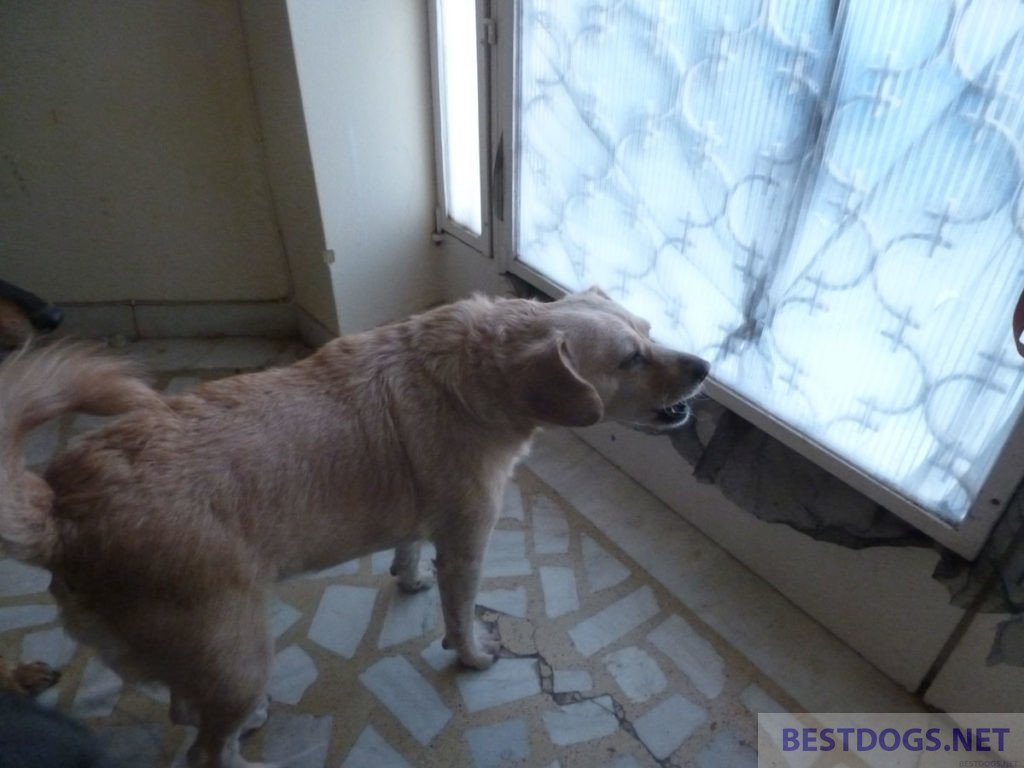
In addition, these bell dogs dispose also of the vermin up to rats in and around the house, which appear straight in the south frequently. With their hunting skills on these small unwelcome journeymen and their warning howl when a visitor arrives, they are the predominant type of dog for domestic use in the south.
They are mostly very funny, clever and very devoted dogs, who know exactly that their task is only to sound the alarm, but never to be aggressive towards visitors. As soon as the landlord appears, their screaming ends, and they are happy about every arrival.
In this video the whole pack – no matter if bell dog, hunting dog or herding dog – takes over the task to draw attention to visitors:
Guard dogs
Rottweilers and German shepherd dogs are often used as guard dogs, but there are also a number of typical local mixtures.
These dogs usually have little fun and often undergo treatments that make them even more aggressive.
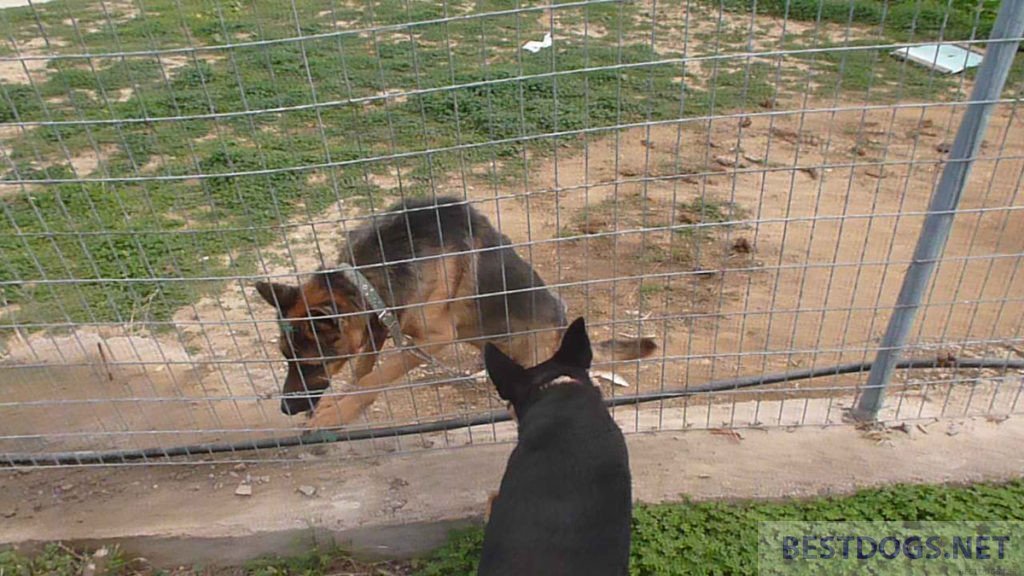
In the past, they were also selected for their task in breeding, so that often only the most aggressive of them were allowed to have offspring.
In the poorer, more southern Mediterranean regions, it has always been imperative to invest as little time and money as possible in the training of a dog, so that a dog that was naturally suitable (most aggressive) for its task is the best.
Hunting dogs
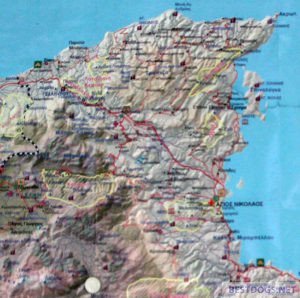
Hunting is common in the southern regions of Europe. In Crete, for example, the hunting season usually starts at the end of August and lasts until the end of February. During this time you can hunt almost anything and almost anywhere with a hunting license or illegally without it.
In fact, most local breeds are hunting dogs. They are bred in large numbers – even illegally – and the less suitable ones are ‘sorted out’.
As hunting dogs there are beside the rare retrieving dogs above all rummaging dogs, pointing dogs and races like greyhounds, terriers and half-breeds, which unite the different tasks in itself.
Of course the hunters only use dogs that they can use under the respective conditions. On Crete a lot is hunted with the shotgun, therefore dogs, which are supposed to rush and kill the game, are rather rare.
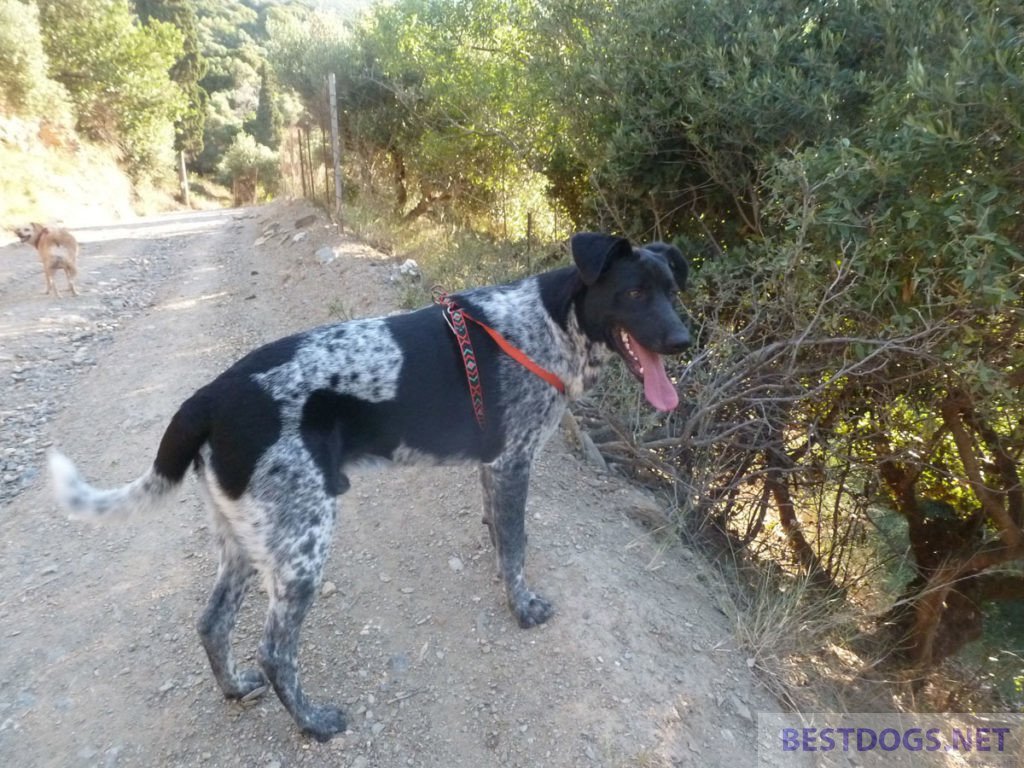
Greyhounds appear above all in Spain, where they should hunt the game with its high speed and strong loot instinct immediately with recognition and kill it.
Terrier-races are used against any small loot-animals. On Crete these are mainly bird species, but also wild rabbits, hares and stone martens.
The list of bird species released for shooting includes skylark, wood pigeon, rock pigeon, quail, turtle-dove, song thrush, real thrush, red thrush, juniper thrush, blackbird, magpie, jackdaw, carrion crow, starling, woodcock, pheasant, rock partridge and the chukar chicken.
In Greece wild boar, red fox, wigeon duck, mallard, speared duck, garganey, spoonbill, table duck, heron duck, coot, gadwall, white-fronted goose, pond rail, snipe and lapwing can also be hunted.
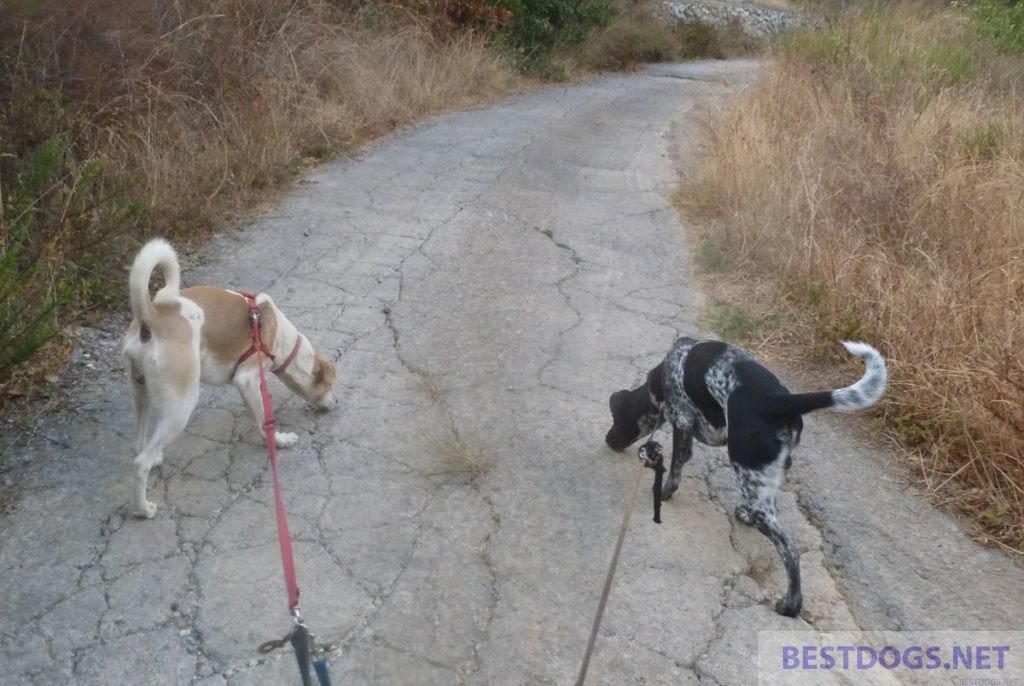
In addition, the smaller hunting terriers should catch also still vermin and mice and rats. These dogs are also not trained much, they should only be agile and catch everything. They learn this quite naturally from their bigger conspecifics.
The rummaging dogs or pointing dogs should find the game and scare it up before it is shot by the hunter. In addition, they have a very good sense of smell with feeling abilities and their noses are almost the entire time on the ground. Also, here often a strong breed selection takes place.
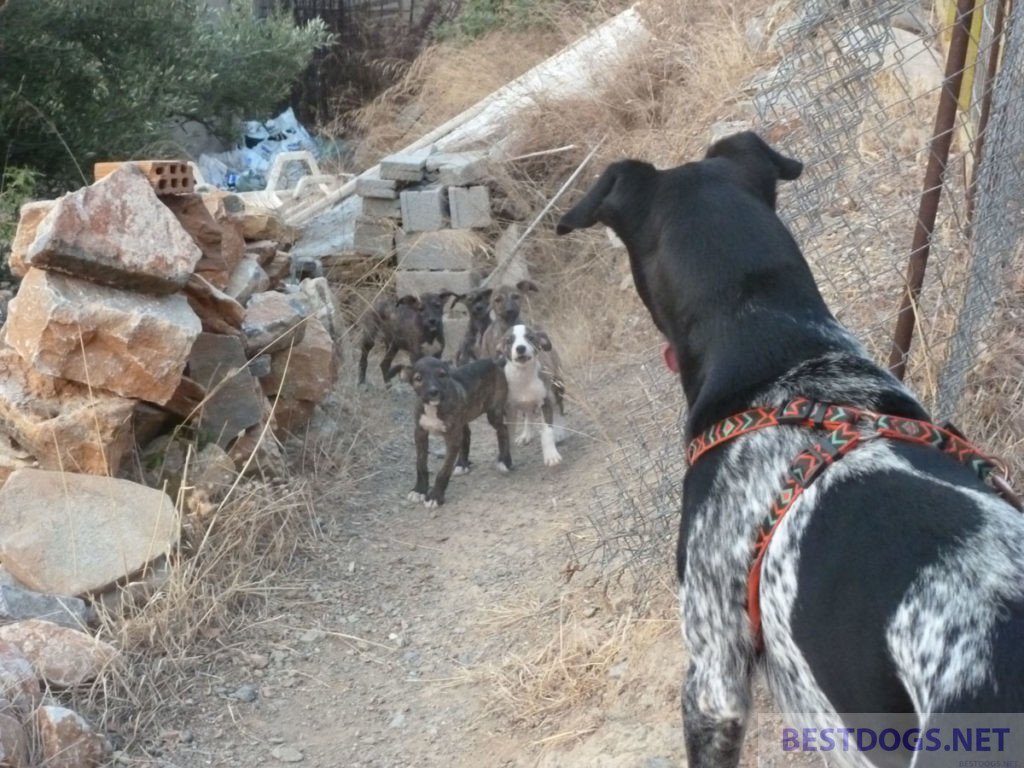
Retrieving dogs are rare in the south, since their training is too complex for the local hunters and one rather uses simple hunting dogs with hardly or no training at all.
Therefore, hunting dogs are often bred in excess and those who are not very successful are simply abandoned or killed. Training to improve their performance is virtually non-existent and no hunter wants to afford unsuccessful hunting dogs, which is the misery of many of these dogs.
Hardly anyone in the south wants to keep worthless dogs, even though this is beginning to change in the cities and larger towns. A similar attitude can also be found in more remote, rural regions in Central, Western and Northern Europe.
Flock dogs
Flock guard dogs and herding dogs are held and bred by the numerous shepherds. Herding dogs are relatively rare because they need a good education to keep goats and sheep together in a herd or to move from one pasture to the next.
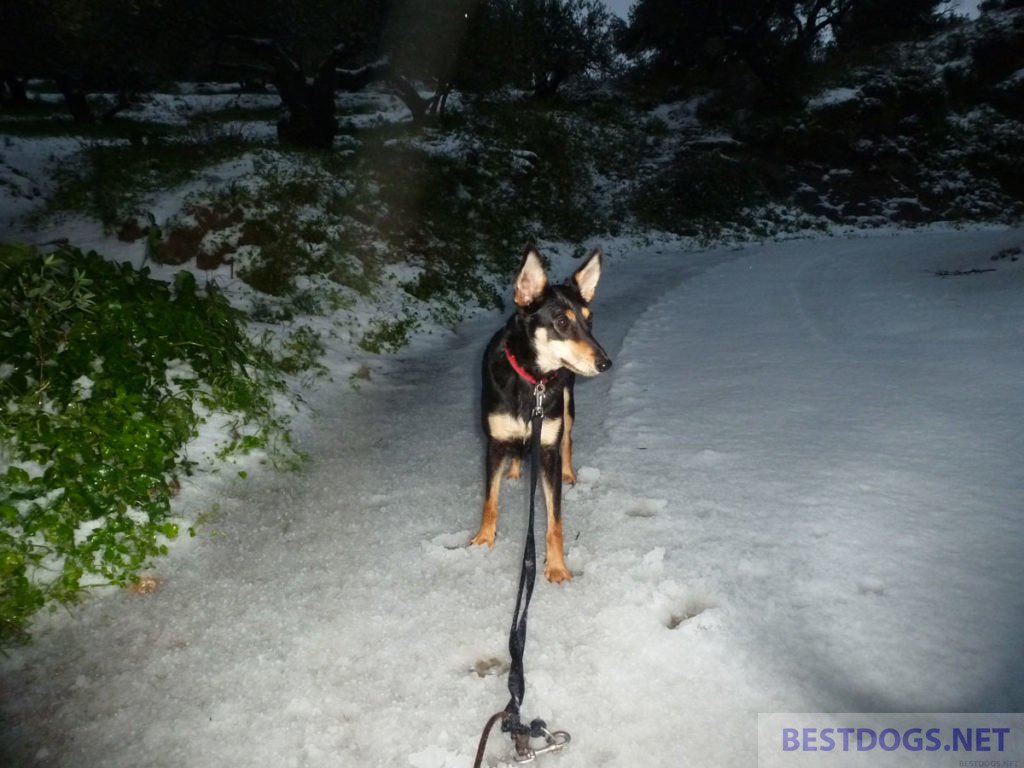
These are mostly fast, light and agile dogs who have learned to deal with the farm animals and their humans. Since their training is time-consuming, one finds them unfortunately likewise only rarely.
On the other hand, flock guard dogs are bigger, powerful and not exactly the darling of aunt Emma. They defend the farm animals against predators, stray dogs and cattle thieves.
As with guard dogs, their aggression threshold is very low and it is very difficult to change it later.
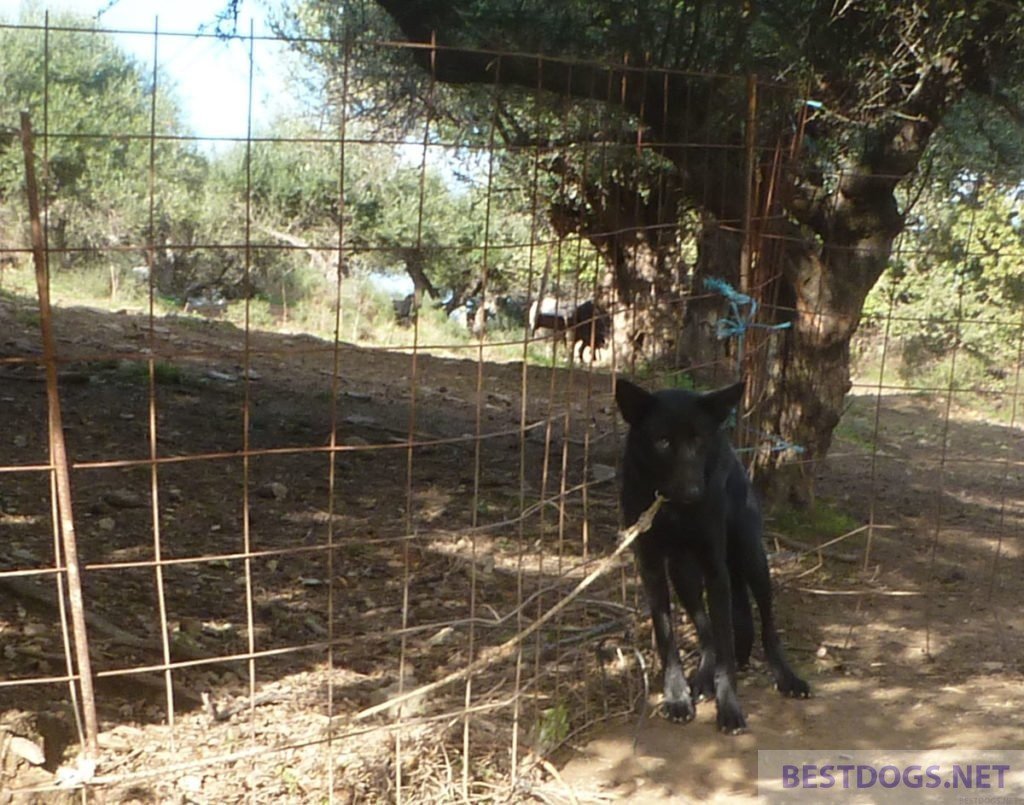
There are also mixed breeds for guard dogs and flock guard dogs. They fulfil both tasks at the same time and are therefore popular, because they are cheap to buy and to keep.
Barrel dogs
The dogs nicknamed Barrel dogs are the most miserable animals in the south, kept as chain dogs. They are usually tied to an open gate or path for the rest of their lives to prevent sheep and goats from leaving the property.
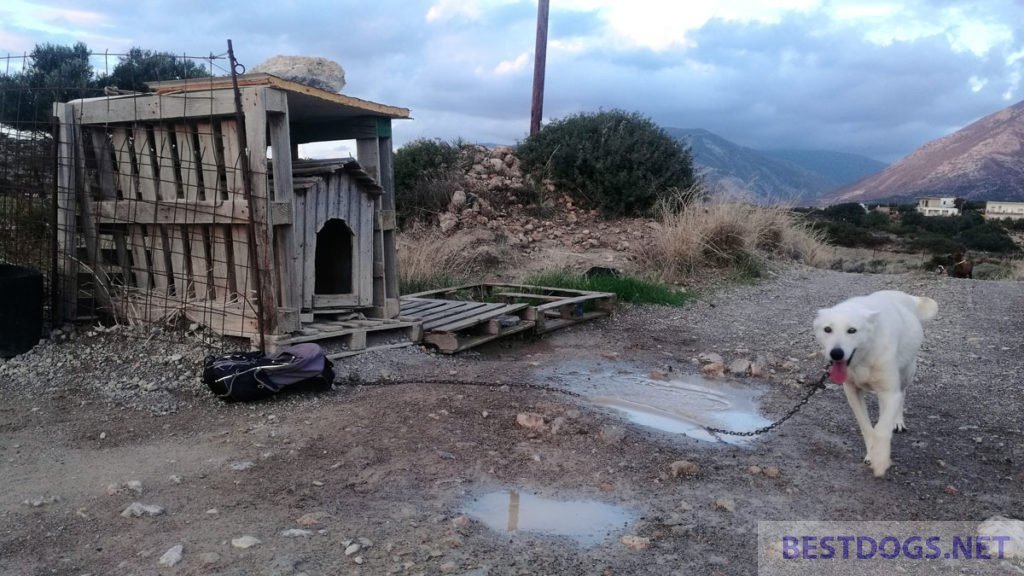
They are the biggest animal welfare problem in the South and therefore deserve a special article: Chain dogs legal ?
Strays
The word ‘stray’ is used rather humorously and this type also differs clearly from the ‘street dog’. Stray dogs spend most of their time on the streets or in nature. Often they even have an owner or at least had one before they were abandoned.
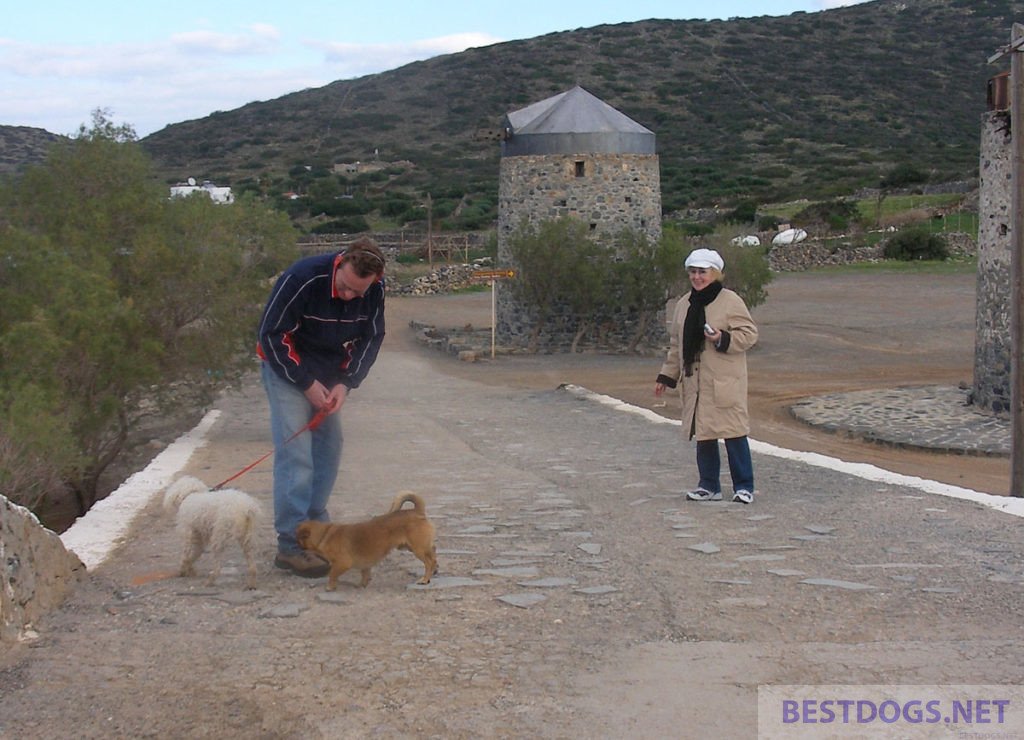
There are strays everywhere around the Mediterranean and many of them have more or less a home or a place to go where they can sleep or be fed. During the day, they are out and about all over the area, looking for food leftovers, roaming around or waiting for what comes their way.
Just like for street dogs, it is important for them not to approach strangers. Since they had lived together with humans before or were abandoned as puppies, whereby their parents also had contact with humans, it is usually possible to be able to use them again without much acclimatization as house dogs.
Stray dogs are, in contrast to real street dogs, due to their inheritance better suited to live together with humans and represent beside abandoned puppies most of the Rescue Dogs from the south, which can be adopted.
Many of these dogs will even be overjoyed when they find ‘their’ human again. But if the dog’s bad experiences dominate, it can take years for them to overcome their fear properly.
Also ‘real’ strays have a great urge for freedom and have to be mentally challenged, which has to be considered in an adoption.
Street dogs
Street dogs are all ‘wild’ dogs that are not used to living with humans. They can be found in the mountains as well as on garbage dumps or in the city.
They are not seen gladly and are often shot or poisoned by shepherds, caught in the city and locked away somewhere.
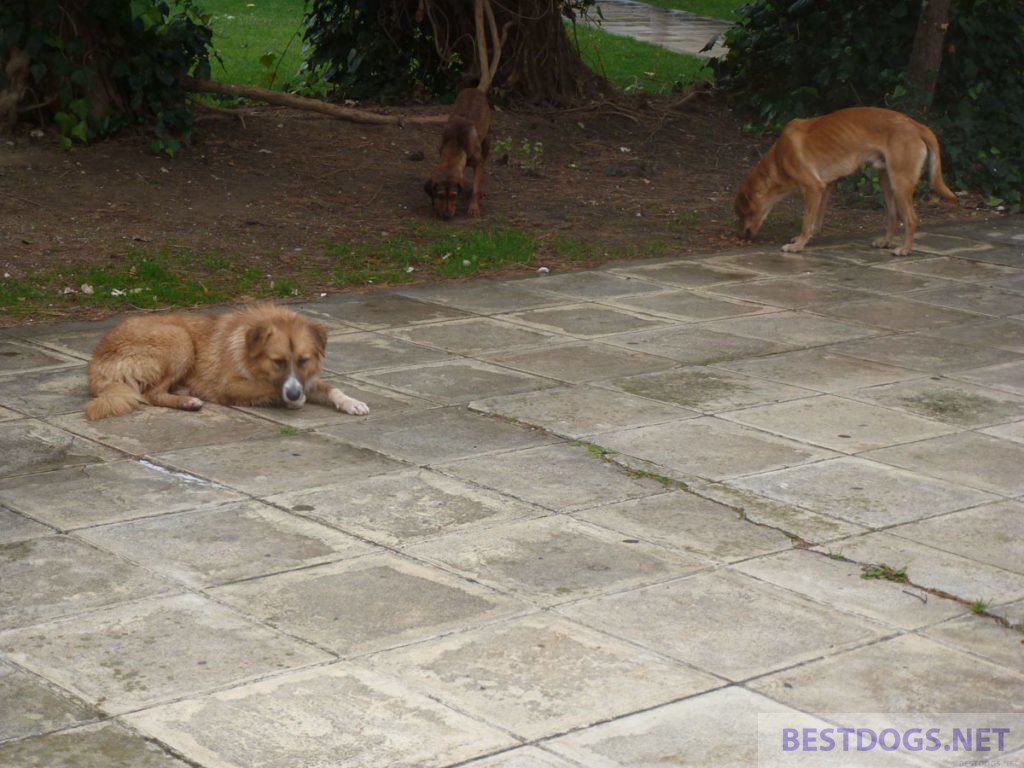
Often these dogs were already born into freedom and lead a hard fight for survival, in which they raise new puppies. Often their life expectancy is short, which is why this natural selection allows only the best of the best to reproduce.
Street dogs are tolerated in the south at best, as long as they do not disturb or appear too dangerous. So it’s better for them to be small, unobtrusive, keep the distance and never appear dangerous or aggressive.
They appear in villages, towns, hotels and on the beach. Especially where there is food somewhere or where they are fed.
There are also whole packs of street dogs. Also these are not seen galdly, because many of the older locals are generally afraid of every dog on the street and many tourists hardly differ from them. The responsibility for accidents with or by these dogs also lies with the community to which the street dogs or homeless strays officially belong.
The most frightened street dogs have the highest life expectancy, which is why after generations these dogs can be accustomed only with difficulty to a close contact with humans. Also, they are usually socialized only to other dogs and not to humans.
However, street dogs, which were fed over a longer period of time by the inhabitants of the city or by guests at the tourist centres, become increasingly tame and less shy towards humans.
Sometimes they are even adopted directly by a guests of a hotel and taken back to their home country.
